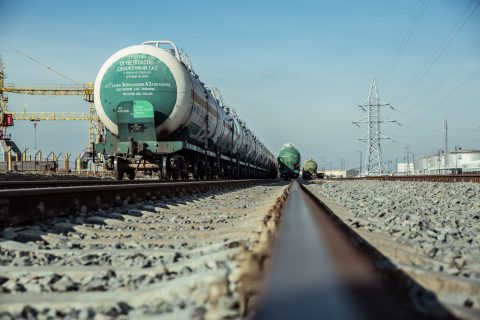Denmark joins the Scandinavian rail-sea link to China

On 6 March, the first China-Europe train departed Xi’an, headed for Denmark. The service includes a sea leg, covering the Baltic Sea from the Russian port of Kaliningrad to the Danish port of Fredericia. The train is fully loaded with goods from SW Motor Company.
After Norway and Sweden, Denmark is the third Scandinavian country to make use of the short-sea service that extends the rail connection between China and Europe via the Baltic Sea. The train departed from Xinzhu Station, and the cargo is estimated to arrive in Denmark 16 days later, on 24 March. It is scheduled to operate once every two weeks in March, and then increase to once a week later on. This was reported by RailFreight.cn.
Port of Fredericia
The Port of Fredericia is the largest container port in southern Denmark and one of the largest import and export ports in Denmark, with a large trade area. It is located on the Scandanavian-Meditarranean corridor and connected to the highway and railway network. It is a known transhipment hub for international goods. The port’s annual cargo turnover is approximately 7.9 million tonnes.
The opening of this new line means that Northern Europe has been further included on the New Silk Road. Already since 2017, trains have been running on the the Xi’an-Kouvola line connecting China and Finland. In November, the Swedish port of Karlshamn was added to the network, and in December the Xi’an-Oslo line was opened.
Baltic Sea extension
Apart from Finland, which enjoys an overland rail connection through Russia to China, the other services all are linked to China with the short-sea link via the Russian enclave of Kaliningrad, which has become a popular transshipment point. The delivery time can be reduced by 2-4 days, as the route avoids the busy border crossing at the Polish-Belarusian border.
At present, there are more than 90 trains departing from Xi’an to the Russian port. From there, vessels connect to ports as Rostock and Mukran, and now also Frederica. From the port of Mukran, the Baltic-Sea Bridge service extends the link, to Karlshamn, Klapeida and Rotterdam.
Also read:
- New multimodal service between Xi’an-Oslo
- New transport links on the Baltic Sea Bridge between Mukran – Xi’an
- Why the Scandinavian cooperation on rail does work
You just read one of our premium articles free of charge
Want full access? Take advantage of our exclusive offer





Excuse me, but Fredericia surely handles more than 7.9 tonnes a year. 😉 With love from the Baltic! 🙂
Hi,sorry for the mistake. it should be 7.9 million tonnes. the English translation in the website of port of Fredericia was wrong.